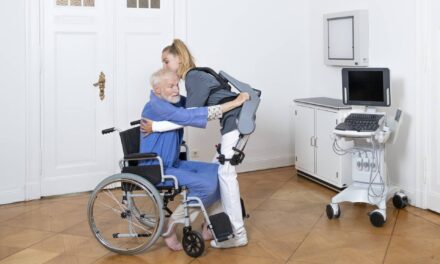Strategies to improve vehicle operator safety for companies’ fleet operations before injuries occur.
By Lori Romero-Ellingson, MBA, AEP, OT/L, CIEE
As an occupational therapist, ergonomist, and safety specialist, there are many things to consider when preparing an employee to get in the cab or cockpit of a motorized vehicle pre- and post-injury. Many fleet industries hold the same philosophies that vehicle operator safety is their number one priority. However, many leaders are unaware of the intricacies of human physiology and the impact that work has on the body and mind.
This article is geared toward therapists working with employers in industries that operate fleets of vehicles. There are many facets to transportation safety and its overall systems. As stated in An Introduction to Human Factors Engineering,“There is no single answer to the driving safety problem. Instead, enhancing driving safety requires a systematic approach that considers drivers, the vehicles, and the environment.”1
Most recently, transportation safety systems have become an increasingly hot topic. As practitioners, we must take a proactive approach and not be limited to merely post-injury training and modalities. Both techniques are essential when working with commercial vehicle operators. Incorporating a systemic or macro ergonomic approach will induce industrial awareness and behavioral changes that decrease overall risk and injury and limit exasperation post-injury.
There are many topics to explore in this space; this article will scratch the surface of the many issues related to monitoring drivers and operators, vehicles, the environment, and promoting intervention options that therapists should be knowledgeable about to positively impact companies’ fleet operations by improving vehicle operator safety. This includes tools practitioners can use to decrease the serious injury and fatality (SIF) rate by recommending approaches and assessments to measure operators’ readiness, fatigue, and interaction or reaction to increased physical demand and automation when operating vehicles.
Identifying Need
Operator fatigue is the most significant factor contributing to errors made by commercial drivers and pilots. It’s been reported that fatigue is believed to be a contributing factor in 30% to 40% of road accidents involving commercial vehicles,2 and the phenomenon of flight fatigue is also common. In one study, 63.9% of pilots reported being mildly fatigued, while 3.8% said they were severely fatigued. 3 Fatigue in any vehicle operator can cause quality, efficiency, and safety problems.4
Additionally, long shift hours that prevent workers from getting at least eight hours of sleep or from experiencing a regular cadence of sleep increase the chance for misplaced focus in high-risk systems. According to the US Department of Transportation, “Nine people in the United States are killed every day in crashes that are reported to involve a distracted driver. In the United States, over 3,100 people were killed, and about 424,00 were injured in crashes involving a distraction in 2019.”5 There is indeed a need to increase vehicle operator safety.
Identifying the Problem
When evaluating and addressing the root cause of any problem, there is never just one path to follow, nor can all possible causes be explored at once. So let’s look at several major aspects of operator safety to identify potential problems.
Environment
Fleet organizations, like all organizations, have objectives and bottom lines. As intervention specialists, we know that hierarchical figures in business have high expectations for a rate of return or return on investment, thus placing pressure on personnel to perform at a high level at the risk of compromising human physiology. There are consequences for that. Anxiety and stress produce a physiological reaction of mental and physical fatigue in the body, increasing the rate of operator error and SIF.
Vehicle
Anthropometrics are applied to engineering when designing vehicles, hence the multifunctional adjustments in seats and steering objects. However, how the human body engages with machinery is often an afterthought. Display design and artificial intelligence (AI) are supposed to simplify the world and increase user ease and function. This has proven true with head-up displays implemented for aviation. This technology that allows pilots to view important information projected directly in front of their face has increased safety by decreasing the need to look down when navigating high-risk machinery and all its functions.
Front dash display technology has also increased in sophistication to assist the operator and reduce error. However, using it has also conversely decreased operators’ attention, understanding, and mental and physical fitness; and increased boredom and distraction. To promote driving safety, it’s key to focus on limiting the number of tasks that can cause vehicle operators to shift their gaze away from the area straight ahead of them, where they need to be looking.1 Auditory displays and speech recognition can reduce resource competition by speaking or listening rather than pushing a button. Still, implementing AI and increased display options meant to increase an operator’s ease does not eliminate distraction or impair gaped judgment, such as slower response to braking.
Additionally, let’s not forget the effects of “self-driving cars,” or autonomous vehicles, and the use of auto-pilot, both of which increase an operator’s “trust and complacency.” Risks include decreasing eye tracking/moving eyes from the road, neglecting to monitor control systems, intervening too slowly to prevent a collision, and falling asleep at the helm.
Driver
For the injured or impaired operator, the increase in technology may adversely affect comprehension and reaction to an emerging need, as noted above.
Shift hours also play a prominent role in fatigue and alertness. Much research and study have addressed this topic. Without going into detail, specific jobs must be performed around the clock, and in such cases there is no avoiding disruptions in circadian rhythms.
Operators need intact physical and mental capabilities, i.e., strength, coordination, and reflexes; sensory system proprioception; vestibular, auditory, and visual acuity (tracking, coordination, depth perception, etc.); and cognition (consequence, discrimination, timing, etc.). As noted in An Introduction to Human Factors Engineering, “Nearly all serious accidents that result in injury or death resulting from one of two sources: loss of control and roadway departure at high speed (a failure of lateral tracking) or collision with a roadway hazard (a failure of longitudinal tracking or speed control).1

Photo 20306094 © Robert Carner | Dreamstime.com
Tools for Intervention
Safety and intervention are “system” processes. There will be multiple roadblocks and yield signs encountered along the navigational process. Environment roadblocks can include lack of financial resources, lack of workforce, engineering, training, organization, personnel resistance, and unions. To begin the interventional pathway, you’ll need to consider the hierarchy of safety controls: elimination, substitution, engineering controls, administrative, and personal protective equipment (PPE).
We are detectives, investigators, and solutionists, and are responsible for intervening pre-and post-SIF, no matter the number of stop signs we encounter.
Environment
Environment intervention begins with reviewing the organization’s safety management system. It is the foundation of getting organizational leadership’s attention to act. Once familiarized with the guidelines and procedures of the systems, we as practitioners can intervene with recommendations and solutions to decrease the SIF and Days Away, Restricted, or Transferred (DART) rates. A tool to assist practitioners is Rasmussen’s (1997) Risk Management Framework. This system is “comprised of various levels; actions and decisions across these levels interact with one another to shape behavior, safety, and accidents.”6 Having the baseline and knowledge of these two systems provides policy and procedures that business leaders can use to support and address the bottom line, a “system-wide network analysis of protective factors.”7
Vehicle
When it comes to vehicles, practitioners, especially ergonomists, have opportunities to work with designers and manufacturers to make beneficial changes. Engineering controls such as modifications within a fleet design should include mechanisms that decrease distraction from looking straight ahead as well as complacency and dependence on AI and display options (independent navigation). Using head-up displays and limiting center console touchpad access have proven to increase driver attention and judgment by better detecting roadside objects and preventing collisions.
Driver
In addition to vehicle modifications, implementing administrative controls such as task variation and appropriate shift work schedules can successfully decrease boredom, physical demand, and repetition for a driver. This adjustment provokes thought and leads to more rest breaks and increased skill. Practitioners must advocate and inform decision-makers that training in both non-technical and technical skills depend on one another and therefore should be completed in unison. 1
Quantitative Assessment Tools
Quantitative assessment tools include but are not limited to fatigue failure analysis, risk fatigue management systems, vehicle ergonomic assessments, reflex exams, eye-hand coordination and eye tracking technology, cognitive test performance, problem-solving and navigating simulations, physical fitness programs, stretch and flex programs, sleep monitor applications, and situational awareness tests.
Operator Safety in a Changing World
We live in an ever-changing volatile, uncertain, complex, and ambiguous (VUCA) world with higher expectations for return on investment, modernization in machinery, increasing conveniences, and a pool of tools for measuring its effects on the human body. There is evidence that such environmental pressures combined with vehicle amenities can disrupt an operator’s cognitive abilities to problem-solve and stay engaged, increasing errors while operating a vehicle.
It is part of our job as intervention specialists to provide a comprehensive look at a complete system, including how certain factors may be contributing to operator error and correlation to SIF and DART rates. As stated in the Ergonomics article “Ergonomics and Human Factors in Aviation,” “Analysis of near misses is an important part of safety management activities. In addition, learning from successful safety outcomes, or what went right, is an important emerging component of maintaining safety systems.” 7
As specialists, we evaluate systems and reconceptualize ways to train industry leaders and operators within the VUCA world, implementing a variety of perspectives and methodologies to assist with a multitude of varying user needs. We can’t stop the world from changing, but we can coach, design, and train others to stay alert and mindful to maintain safe practices for themselves and others around them.
Lori Romero-Ellingson, MBA, AEP, OT/L, CIEE, has more than 20 years of experience in the healthcare industry. OSHA and board-certified, she specializes in setting and enforcing comprehensive workplace health safety standards. All applications prioritize improved safety, comfort, and efficiency for employees, resulting in increased productivity, retention, and quality outcomes for employers. For more information, contact [email protected].
Main Photo Caption: Vehicle operator safety is important to pilots in the cockpit of a plane. Photo: 20306094 © Robert Carner | Dreamstime.com
References
1. Wickens, Christopher D, et al. An Introduction to Human Factors Engineering. Second ed., W. Ross MacDonald School Resource Services Library, 2015: 436-465
2. Foy DJ, Dongen HV. Safety, Economic and Health Consequences of Sleep Loss and Fatigue in Shift Work. 2011: Issue 1.Volume 3; 5
3. Zhang P, Zhao W, Shi L, Wang Y, Sun Z. Study on Fatigue Coeffiecient of Airline Pilots. Front Psychol. 2022;13:865342. Published 2022 May 11. Doi:10.3389/fpsyg.2022.865342
4. Johnson, Bill, AVS Maintance Fatigue Workshop Helps Transition Science Workplace Reality. 2011: Issue 1.Volume 3; 2
5. “The Roadway Safety Problem.” U.S. Department of Transportation, https://www.transportation.gov/NRSS/SafetyProblem.
6. “Rasmussen’s (1997) Risk Management Framework.” The UPLOADS Project, 19 Apr. 2014, https://uploadsproject.org/rasmussens-1997-risk-management-framework/.
7. Stanton, Neville A., et al. “Ergonomics and Human Factors in Aviation.” Ergonomics, vol. 60, no. 1, 2017, pp. 150–150., https://doi.org/10.1080/00140139.2016.1262578.





